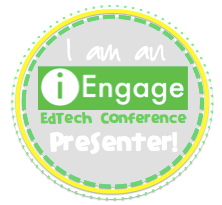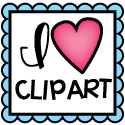Anyway, I'm back to share an assortment of things I've learned from another phenomenal workshop with Kristina Smekens. Prior to registering, her workshop claimed to provide the skills and motivation teachers need to keep reading instruction both purposeful and dynamic for students. After attending, I must say the all-day workshop did not disappoint.
I was blasted with so many steadfast suggestions and innovative mini-lessons to better scaffold students, as well as grab and keep their attention, that I've decided to break up the content shared at the workshop into three parts, instead of having one never-ending blog post.
- Part 1: Launching the School Year- Defining Reading Range & Text Types
- Part 2: Three Components Defining 'Readers as Thinkers'
- Part 3: Mini-Lesson Ideas for Reading Strategies
Suggestions for Launching the School Year:
Think about your reading experiences as an adult. You probably read a variety of undemanding reads such as magazines, recipes, novels, etc. However, when the time approaches, you may also be required to make sense of more laborious reads, such as tax forms during tax season, policies, insurance documents and so on. As adults, it's real life to read a variety of texts. Bringing in some of your authentic samples of *easy* and *hard* reads at the start of the year for students to view firsthand, gives them a preview of what's out there.
After establishing your procedures and routines for Reading, Kristina suggests starting off the year by explaining to students what they will be reading, which encompasses *easy*, *hard*, and multimodal texts throughout the year. (Click HERE for more information on multimodal texts.) These varieties of text types will be read for differing reasons because that's real life. Cautioning students to expect easy days and hard days makes for a nice transition into teaching them how to persevere through the harder texts (Close-Reading). This is crucial because students will encounter difficult texts inside and outside of the classroom, without a doubt.
Defining the Reading Range: Literature vs. Literary Nonfiction vs. Informational Texts
Along the same lines, it is essential teachers discuss the parameters of literature, literary nonfiction and informational texts. Helping define the range of reading for students is a necessity. Kristina states, "No longer can we simply refer to something as fiction or nonfiction. The CCSS requires us to distinguish literature, informational text and literary nonfiction- and engage our students with all three." Below are the comparative features for each text type. If you click on the image, you can download a copy for yourself.
Characteristics of Literature:
We usually refer to Literature as fiction. Kristina affirmed literature comprises the following:
"It includes made-up characters who overcome problems and resolve conflicts. It encompasses picture books, short stories, fables, fairy tales, legends, folk tales, chapter books, historical fiction, realistic fiction, sic-fi, novels, poetry, and plays/dramas."Characteristics of Literary Nonfiction:
The big difference between literary nonfiction and informational text is how facts are revealed. Kristina indicated:
"These texts read more like literature, but all the information is factual. Think of it like a hybrid. Authors of literary nonfiction engage readers with their lively narrative voice, weaving facts with details that appeal to the reader's emotions and make the subject come alive. These include biographies, memoirs, documentaries, essays and speeches."Characteristics of Informational Texts:
Informational text is read for the purpose of gaining knowledge. Kristina referenced informational texts with the the details below:
"By nature, this text is of a higher text complexity with specialized vocabulary specific to the topic, heavy doses of facts, and numerous text features. These texts include text books, primary source documents, newspaper articles, etc."Teaching the Differences:
To teach the differences between the text types, introduce students to a specific topic using a piece of literature, a literary nonfiction text and an informational text. Assist students in comparing how the topic is treated in each text. The topic of turtles was brought up at the workshop. Teachers may, for example, choose the books below to introduce the topic of turtles to students.
 |
| Literature Example |
 |
| Literary Nonfiction Example |
 |
| Informational Example |
"Understanding the expository text structures gives readers a better shot at determining important information when reading nonfiction...If students know what to look for in terms of text structure, they grasp the meaning more easily."Literature is less complex to understand because the structure is always chronological. However, when students are reading informational texts, they need to be able to identify which of the seven types of expository structures they're reading. This makes reading informational texts much more complex!
To more sensibly prepare students to be successful readers, teachers need to start or remain explicit in teaching the necessary skills to better comprehend the different types of texts. I'll end this post with a quote from Kristina Smekens: "As we are teaching the Common Core Standards, we need to do more than just read the different types of text. We need to teach their similarities and unique differences side by side."
I am hoping the information in this post is worthwhile to someone. I never really know who is actually reading my posts, but I'm hoping the time and effort I put into writing them isn't going to waste. :) Nonetheless, I will be back sometime soon to share more in Parts 2 and 3!
Happy Friday.





































SO much great information! I really need to get to one of her PDs! Thanks for sharing Colleen!
ReplyDeleteThanks! :) You certainly do need to go to one of her PDs. How about attending the Literacy Retreat THIS summer with Courtney and me?! #youknowyouwantto :)
Deletethanks for sharing. Are you or any other bloggers doing a summer book study this summer?
ReplyDeleteHi, Toya! Thanks and my pleasure to share the information I learn at my PDs. :) Yes, I'm in the works of trying to figure out a summer book study. Hip-hip-hooray! Titles are being suggested by a few teachers in my district. Not sure of the exact book or details just, yet, but stay tuned! :)
Deletethanks for sharing. Are you or any other bloggers doing a summer book study this summer?
ReplyDeleteHoly moly, this comment slipped past me! I apologize, Toya, for such a late response. My goodness. Anyway, some teachers in my district are going to partake in a book study on Taylor Mali's book, What Teachers Make. It begins on July 21 on Literacy Loving Gals. Join us, if you're up for it. Once again, sorry for the missed comment! XO
Delete